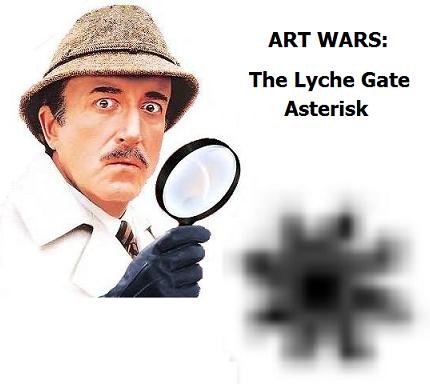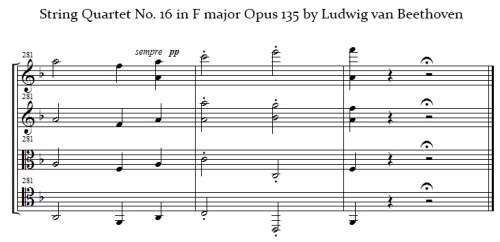See also LYNX 760 , Rubik vs. Abel, and Toying.
Saturday, April 26, 2014
Tuesday, October 1, 2013
Frame Tale
From an academic's website:
For Josefine Lyche and Ignotus the Mage,
as well as Rose the Hat and other Zingari shoolerim —
Sabbatha hanti, lodsam hanti, cahanna risone hanti :
words that had been old when the True Knot moved
across Europe in wagons, selling peat turves and trinkets.
They had probably been old when Babylon was young.
The girl was powerful, but the True was all-powerful,
and Rose anticipated no real problem.
— King, Stephen (2013-09-24).
Doctor Sleep: A Novel
(pp. 278-279). Scribner. Kindle Edition.
From a post of November 10, 2008:

Twenty-four Variations on a Theme of Plato,
a version by Barry Sharples based on the earlier
kaleidoscope puzzle version of Steven H. Cullinane
"The king asked, in compensation for his toils
during this strangest of all the nights he had
ever known, that the twenty-four riddle tales
told him by the specter, together with the story
of the night itself, should be made known
over the whole earth and remain eternally
famous among men."
Frame Tale:
"The quad gospellers may own the targum
but any of the Zingari shoolerim may pick a peck
of kindlings yet from the sack of auld hensyne."
Tuesday, May 8, 2012
Staging the Self
| SPOILER ALERT
This post links to a column that |
The title is from a column by Stanley Fish
on The Hunger Games books in today's
online New York Times . The column
was posted at 9 PM EDT on May 7th, but I
did not see it until this morning.
Fish says—
"In the end… [spoiler details omitted]…
children… 'don’t know they play
on a graveyard'…."
For some literary background, see last night's post
on the May 7th, 2012, NY Times obituaries as well
as the May 7th, 2006, Log24 post featuring 24 squares
arranged in a rectangular frame.
See also Frame Tales and, more generally,
The King and the Corpse.
"Et cetera, et cetera, et cetera." — Yul Brynner
Friday, September 23, 2011
Kali’s Thunder
NY Lottery this evening—

Continued from Themes of Sept. 17—
"And I heard, as it were, the noise of thunder."
Lottery hermeneutics for this evening—
747 — Source of the sound effect in a post of April 28, 2009:
"And Kali, ‘The Dark One,’ addressed him with the voice of a cloud of thunder…"
— The King and the Corpse , by Heinrich Zimmer
3695 — Number of a post on Steps Toward Salvation (Dec. 14, 2008)
Wednesday, August 24, 2011
Conjure
In the catacomb of my mind
Where the dead endure—a kingdom
I conjure by love to rise
— Samuel Menashe, as quoted by
Stephen Spender in a review of four
different poets, "The Last Ditch,"
The New York Review of Books , July 22, 1971
"…the ghost reveals that the beggar
is in fact a sorcerer, a necromancer
who is preparing the mandala in order
to achieve an evil end. The ascetic
intends to bind the ghost to the corpse,
place it in the center of the circle,
and worship it as a deity."
— The King and the Corpse (from synopsis in
"How Many Facets Can a Non-Existent Jewel Have?")
Menashe died on Monday, August 22, 2011.
Related material by and for two other poets
who also died on Monday:
- By Jerry Leiber— "Love Potion #9"
-
For Nick Ashford— Nicole Kidman in
Sermon (from Jan. 9) and
Conjure Wife, a 1943 tale by Fritz Leiber
See also an excerpt from Kerouac I cached on Monday, and
Men ask the way to Cold Mountain
Cold Mountain: there's no through trail .
Thursday, February 24, 2011
Now Lens (continued)
"…the farther back we manage to wiggle
the more we need the loan of a lens…." —Finnegans Wake
For some background on the lens below, see the sermon on February 20th, 2011.
“The quad gospellers may own the targum but any of the Zingari shoolerim
may pick a peck of kindlings yet from the sack of auld hensyne.”
The above "Zingari shoolerim" passage was quoted here in Frame Tales (November 10th, 2008).
That post concerned the Heinrich Zimmer tale "The King and the Corpse." Some related material—

Thursday, December 16, 2010
Monday, May 24, 2010
Finale
The weekend's posts in this journal coincided,
more or less, with the finale of the TV series "Lost."
Recalling each story brings to mind
the subtitle of Heinrich Zimmer's classic
The King and the Corpse —
Tales of the Soul's Conquest of Evil.
Here, in the spirit of "The Fifth Element," is a
brief graphic summary of such a conquest—
The Soul
Evil
(from Saturday morning)

Thursday, November 5, 2009
Universal Culture Machines
University of California anthropologist Alan Dundes:
"One could well argue that binary opposition is a universal. Presumably all human societies, past and present, made some kind of distinction between 'Male and Female,' 'Life and Death,' 'Day and Night' (or Light and Dark), etc." –"Binary Opposition in Myth: The Propp/Levi-Strauss Debate in Retrospect," Western Folklore, Winter 1997
To Levi-Strauss, I prefer Clifford Geertz —
"…what Levi-Strauss has made for himself is an infernal culture machine." –"The Cerebral Savage"
— and Heinrich Zimmer —
"…all opposition, as well as identity, stems from Maya. Great Maya is wisdom and increase, stability and readiness to assist, compassion and serenity. Queen of the World, she is alive in every nuance of feeling and perception; feelings and perceptions are her gestures. And her nature can be sensed only by one who has comprehended that she is the unity of opposites." —The King and the Corpse
And then there are more up-to-date culture machines.
Levi-Strauss, obtuse and boring, is an opposite, of sorts, to the smart and funny Dundes. The latter, in the binary opposition posed in yesterday's Log24 title "Sinner or Saint?," is definitely on the side of the saints. (See selected Log24 entries for the date of his death– Warren Beatty's birthday.)
Today's happy birthdays — Elke Sommer —
and Sesame Street —
Google logo today, Nov. 5, 2009
Click images for historical background.
Tuesday, April 28, 2009
Tuesday April 28, 2009
Quality
Hint:
The above symbol
does not stand for
"Walter Winchell."
— Oct. 15, 2008
From the link
at the end of
yesterday's entry:
|
Noah: Jenny, what's troubling you? Jenny: Sigh. I was reading this book, but the words stopped in mid-sentence at the bottom! What… what do I do, Noah? Noah: Turn the page. Turns page. Falls in love amidst turmoil. |
The King and the Corpse, pp. 265-266:
"… the goddess at last bodily appeared to him, dark and slender, hair hanging free, and standing on the back of her tawny lion. He gave her greeting. And Kali, 'The Dark One,' addressed him with the voice of a
THE KING AND THE CORPSE
cloud of thunder: 'For what reason have you called? Make known your wish. Though it were unattainable, my appearance would guarantee its fulfillment.'"
Monday, November 10, 2008
Monday November 10, 2008
Frame Tales
From June 30 —
("Will this be on the test?")
Frame Tale One:
|
Summer Reading
Subtitle: |
Frame Tale Two:
Barry Sharples
on his version of the
Kaleidoscope Puzzle —
Background:
"A possible origin of this puzzle is found in a dialogue
between Socrates and Meno written by the Greek philosopher,
Plato, where a square is drawn inside a square such that
the blue square is twice the area of the yellow square.

Colouring the triangles produces a starting pattern
which is a one-diamond figure made up of four tiles
and there are 24 different possible arrangements."

"The king asked, in compensation for his toils during this strangest
of all the nights he had ever known, that the twenty-four riddle tales
told him by the specter, together with the story of the night itself,
should be made known over the whole earth
and remain eternally famous among men."
Frame Tale Three:
"The quad gospellers may own the targum
but any of the Zingari shoolerim may pick a peck
of kindlings yet from the sack of auld hensyne."
Monday, June 30, 2008
Monday June 30, 2008
Subtitle:
Tales of the Soul's
Conquest of Evil
Saturday, February 1, 2003
Saturday February 1, 2003
Time and Eternity
|
 Kali figure
|
|
 Windmill
|
Yesterday's meditation on St. Bridget suggests the above graphic summary of two rather important philosophical concepts. Representing Kali, or Time, is Judy Davis in "The New Age." Representing Shiva, or Eternity, is sword-saint Michioka Yoshinori-sensei. The relationship between these two concepts is summarized very neatly by Heinrich Zimmer in his section on the Kalika Purana in The King and the Corpse.
The relationship is also represented graphically by the "whirl" of Time and the "diamond" of Eternity.
On this day in 1944, Mondrian died. Echoes of the graphic whirl and diamond may be found (as shown above) in his "Red Mill" and "Victory Boogie-Woogie."










